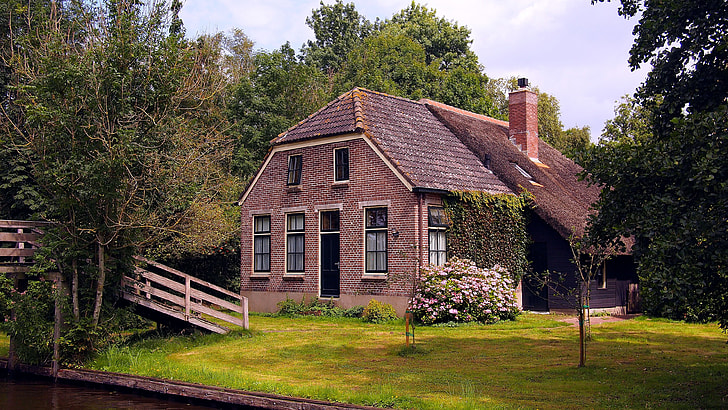Step into the charming world of Dutch Delftware, where intricate blue tiles and pottery pieces beckon with their timeless beauty and rich historical significance. For centuries, this exquisite art form has adorned Dutch homes, echoing the tales of a bygone era. With its delicate craftsmanship and mesmerizing shades of blue, Delftware has become an emblem of Dutch heritage and a testament to the country’s artistic prowess. In this article, we will delve into the captivating origins, breathtaking artistry, and enduring legacy of Dutch Delftware, allowing you to experience the allure of this age-old tradition from the comfort of your own imagination. Get ready to embark on a journey of discovery, where the strokes of a brush and the touch of fire fuse together to create moments frozen in time.
History and Origins: Tracing the Rich Heritage of Dutch Delftware
History and Origins
The exquisite beauty of Dutch Delftware has graced countless homes and museums around the world, captivating admirers with its delicate designs and timeless allure. To truly appreciate this beloved ceramic art form, one must embark on a journey through history, exploring the origins of Delftware and the legacy it has left behind.
Tracing its roots back to the early 17th century, Dutch Delftware emerged as a response to the demand for luxurious porcelain from the East. Inspired by the blue and white porcelain imported from China, renowned Dutch potters sought to replicate this coveted style, sparking a flourishing industry that would soon become iconic. The charming town of Delft, nestled in the heart of the Netherlands, quickly established itself as the epicenter of Delftware production, giving birth to a distinctive art form that symbolized Dutch craftsmanship and ingenuity.
- Influence of Chinese Porcelain: Chinese blue and white porcelain played an influential role in shaping the aesthetics of Dutch Delftware. The desire to imitate and recreate the delicate designs of Chinese ceramics spurred the development of unique Delftware patterns that blended Eastern influence with European sensibilities.
- Golden Age of Delftware: The 17th and 18th centuries marked the golden age of Delftware production, with skilled artisans producing an array of exquisite pieces. From ornate vases and elegant tableware to intricate tiles and delightful figurines, Delftware thrived during this period, becoming a symbol of Dutch affluence.
- The Decline and Revival: By the late 18th century, changes in fashion and the rise of competing porcelain manufacturers led to a decline in Delftware production. However, the unwavering love for this iconic art form led to its revival in the 19th and 20th centuries, as collectors and enthusiasts sought to preserve and celebrate the rich heritage of Dutch Delftware.
Today, the timeless beauty of Dutch Delftware continues to captivate art connoisseurs and enthusiasts alike, serving as a living testament to the creativity and craftsmanship of generations past. Whether displayed as cherished heirlooms or admired in distinguished museums, these exquisite pieces invite us to marvel at the enduring legacy of Dutch ceramic art.

Production Techniques: Unraveling the Artistic Craftsmanship Behind the Iconic Blue Tiles and Pottery
Delve into the mesmerizing world of artistic craftsmanship that brings forth the iconic blue tiles and pottery adored for centuries. Step into a realm where skilled artisans masterfully manipulate clay and glazes, transforming them into exquisite works of art that stand the test of time. Discover the production techniques that intertwine tradition, innovation, and a touch of magic, resulting in the creation of these awe-inspiring masterpieces.
At the heart of this artistic craft lies a delicate dance between skillful handwork and innovation. Each blue tile or pottery piece is meticulously handcrafted, sculpted, and molded by the skillful hands of artisans who have honed their techniques over generations. The process begins with the selection of the premium quality clay, renowned for its unique properties that allow for precise shaping and durability.
- Terra Cotta Mixing: The artisans skillfully mix select clay with water to form a homogenous mixture, known colloquially as terra cotta. This mixture provides the ideal foundation for the subsequent steps.
- Sculpting and Molding: Using their bare hands, the artisans shape the terra cotta into desired forms, artfully molding intricate patterns and designs, breathing life into each creation.
- Firing Process: Once shaped, the pottery or tiles are set aside to dry, followed by the firing process in a kiln. This critical step binds the clay particles together, transforming them into resilient masterpieces, ready to endure the test of time.
- Glazing and Painting: The glazing process introduces breathtaking shades of blue, enhancing the elegance and mystique of each piece. Expert painters skillfully decorate the tiles or pottery, using traditional techniques passed down through generations ensuring the preservation of the craft’s essence.
- Final Firing and Quality Control: The creations are fired once again to achieve the perfect fusion of colors and to solidify the final product. A stringent quality control process ensures that only the utmost quality pieces bearing the mark of true craftsmanship grace the world.
- Legacy and Innovation: This exceptional art form harmonizes the ancient traditions with modern innovations, embracing new techniques to create astonishingly intricate designs while preserving the authenticity and cultural heritage.

Collecting and Displaying: Adding Dutch Delftware to Your Home Decor
Adding a touch of elegance and history to your home decor is as easy as incorporating Dutch Delftware into your collection. These exquisite blue and white ceramic pieces have been popular since the 17th century and continue to captivate enthusiasts worldwide. Whether you’re a seasoned collector or just starting your journey, here are some creative ways to showcase your Dutch Delftware:
- Mix and match: Don’t limit yourself to a single pattern or style. Dutch Delftware comes in various designs, such as floral motifs, windmills, and maritime scenes. To inject a fresh and eclectic vibe, experiment by combining different patterns in your collection. The contrasting patterns will add depth and visual interest to your home decor.
- Feature as a centerpiece: Display your most prized Dutch Delftware piece prominently as a centerpiece. It could be a stunning vase filled with fresh flowers or an intricately painted plate mounted on a stand. Placing it in a well-lit area, such as your dining table or fireplace mantel, will draw attention to its beauty and serve as a conversation starter.
- Create a wall display: Turn heads by creating a captivating wall display with your Dutch Delftware collection. Arrange your plates, tiles, and platters in a grid pattern or play with different heights and sizes for a more dynamic composition. The blue and white color palette will add a timeless charm to any room, making it a true focal point.
By incorporating Dutch Delftware into your home decor, you not only infuse your space with elegance but also embrace a piece of artistic history. Whether you choose to mix and match patterns, feature a centerpiece, or create a wall display, Dutch Delftware will undoubtedly add a touch of sophistication and cultural richness to your surroundings. Start exploring the beauty of these ceramic treasures and embark on a journey that will transform your home into a haven of Dutch craftsmanship.

Exploring Modern Innovations: Contemporary Adaptations of Dutch Delftware Artistry
In recent years, the art world has witnessed a remarkable fusion of tradition and innovation in the realm of Dutch Delftware. Once known for its blue and white ceramic works, this centuries-old art form has undergone a captivating transformation in the hands of contemporary artists. Today, bold and vibrant colors, intricate patterns, and unconventional shapes characterize the modern adaptations of Dutch Delftware, breathing new life into this cherished cultural heritage.
Evoking a sense of nostalgia while embracing the spirit of experimentation, these contemporary iterations of Delftware push the boundaries of traditional craftsmanship. Talented artisans have embraced modern tools and techniques, combining age-old craftsmanship with modern aesthetics to create breathtaking works of art. From whimsical reinterpretations of traditional motifs to innovative use of materials, these pieces capture the essence of Dutch Delftware while delivering a fresh and unique perspective.
To Conclude
As we stroll through the enchanting world of Dutch Delftware, we cannot help but be captivated by the mastery and timeless beauty encapsulated within each delicate brushstroke. From intricately adorned blue tiles that transport us to tranquil canal views, to meticulously crafted pottery that holds tales of generations past, Delftware has woven its way into the fabric of Dutch culture.
With every piece, we are reminded of a bygone era, where craftsmanship was elevated to an art form. The resplendent blue hues, obtained through a painstaking process of hand-painting and glazing, radiate a sense of serenity that can only be found in the gentle strokes of an artist’s brush. Each brushstroke tells a story, narrating the essence of Dutch landscapes or depicting scenes from daily life.
Beyond the aesthetic appeal, Dutch Delftware carries within it a rich heritage. It is a testament to the perseverance and ingenuity of the craftsmen who perfected the art over centuries. Rooted in the traditions of Chinese porcelain, this unique interpretation emerged in the 17th century as an exquisite fusion of Eastern and Western influences.
As we explore the diverse motifs that adorn these precious pieces, we unlock a window into history. Whimsical windmills, graceful tulips, and scenes of bustling canals transport us to a time when these symbols were woven into the very fabric of Dutch society. Each motif evokes emotions of national pride, serving as a cherished reminder of the cultural tapestry that defines the Netherlands.
Dutch Delftware is more than mere decoration; it is a tangible connection to a past that continues to shape the present. With every tile and pottery piece, we honor the hands that meticulously shaped these treasures, the artisans who adorned them with their dreams, and the spirit of a nation.
So let us cherish these timeless creations. As we admire their beauty, may we remember that Dutch Delftware is not just an expression of art, but a testament to the indomitable spirit of the Dutch people.

